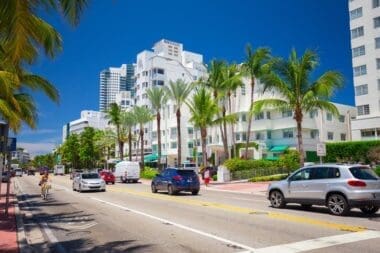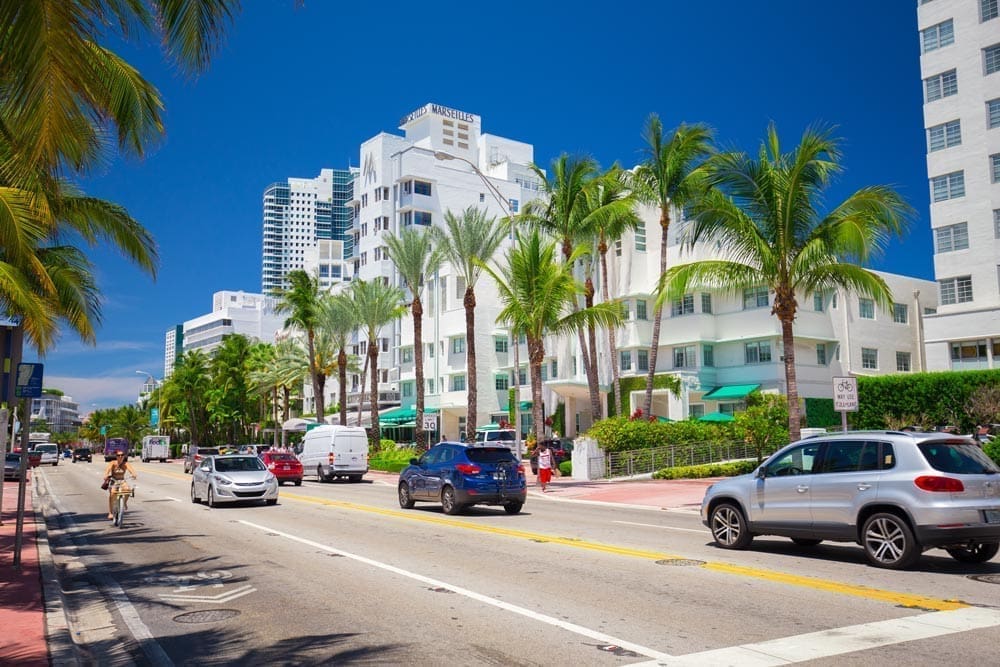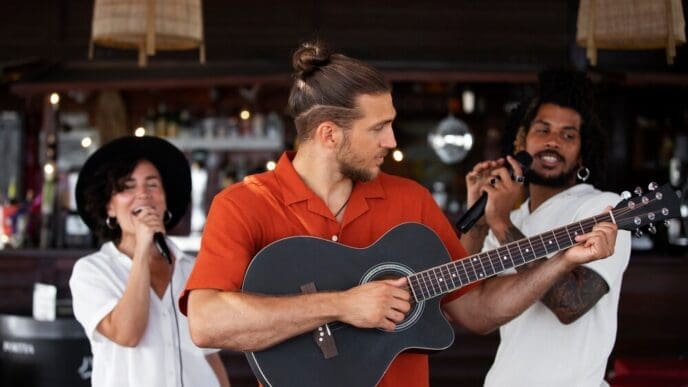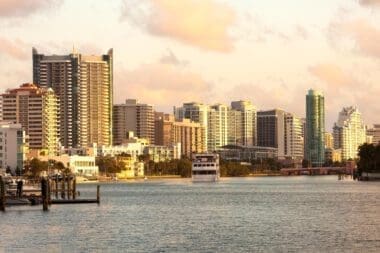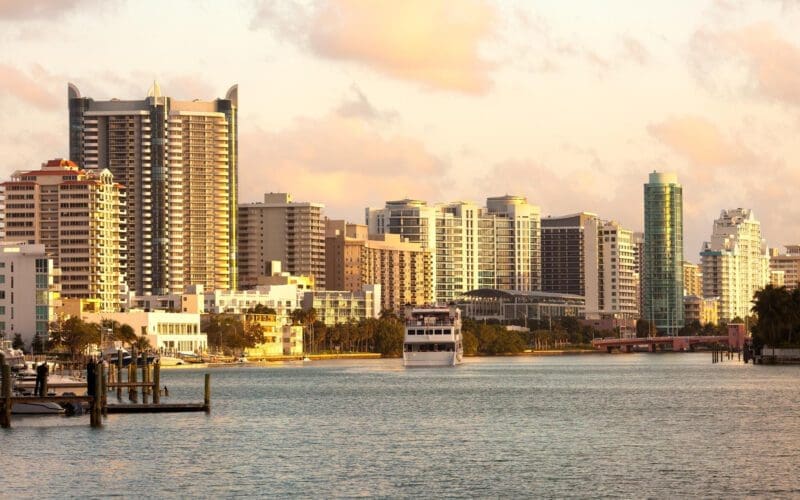For locals and visitors looking to connect with Miami beyond its sun-drenched beaches, this weekend offers the perfect opportunity to explore the city’s soul through its rich and layered past. The best way to do this is on foot, by embarking on a self-guided historic walk through Miami’s most iconic neighborhoods. From the glamorous Art Deco architecture of South Beach and the vibrant Cuban heritage of Little Havana to the bohemian roots of Coconut Grove, these walks provide a tangible link to the pioneers, artists, and immigrants who built the Magic City, offering a profound and unforgettable experience of its history and culture.
Art Deco Dreams: A Walk Through South Beach’s Iconic Past
South Beach is more than a party destination; it is a living museum of 20th-century architecture. A historic walk here is a journey back to an era of exuberant optimism, sleek design, and tropical glamour. The concentration of over 800 significant buildings within the Miami Beach Architectural District makes it one of the most compelling urban walks in the world.
The Route At-a-Glance
Begin your exploration at the Art Deco Welcome Center on Ocean Drive and 10th Street. From there, walk north along Ocean Drive, taking in the pastel-hued hotel facades that face Lummus Park. At 15th Street, head one block west to Collins Avenue and walk south, where you’ll find another collection of stunning hotels and storefronts. This simple loop provides a comprehensive overview of the district’s most famous structures.
Key Architectural Highlights
As you stroll, keep an eye out for the key features of the Art Deco style: symmetrical patterns, geometric details, and decorative elements like chevrons, zigzags, and fountains. The Colony Hotel (736 Ocean Drive), designed by Henry Hohauser in 1935, is a quintessential example with its iconic blue neon sign and simple, bold facade. Nearby, The Carlyle (1250 Ocean Drive) showcases the grander side of the style, its three vertical sections and curved edges creating a sense of monumental elegance.
You will also notice variations like Streamline Moderne, which emphasizes curving forms and long horizontal lines, seen in buildings like The Breakwater Hotel (940 Ocean Drive). Don’t forget to look for Mediterranean Revival architecture, an earlier style characterized by stucco walls, red-tiled roofs, and wrought-iron balconies, which dots the landscape and provides a beautiful contrast.
Beyond the Buildings: Stories of an Era
Each building tells a story of Miami Beach’s transformation from a mangrove swamp into a fashionable winter retreat for the American elite. The boom of the 1920s and 30s brought architects and dreamers to the shore. These structures were not just hotels; they were symbols of a new, modern American vacation, offering an escape filled with sun and sophistication. The preservation of this unique streetscape is a story in itself, thanks largely to the efforts of Barbara Baer Capitman and the Miami Design Preservation League, who fought against developers in the 1970s to save these historic gems from demolition.
Practical Tips for Your Walk
The best time for this walk is early in the morning, before the intense Florida sun and the crowds descend. The soft morning light beautifully illuminates the pastel colors of the buildings. Wear comfortable shoes and light clothing, and consider stopping at a classic spot like the News Cafe for a coffee or a mimosa to soak in the atmosphere of Ocean Drive.
Calle Ocho Chronicles: The Heartbeat of Little Havana
A walk through Little Havana is an immersive cultural experience that engages all the senses. Centered around SW 8th Street, or Calle Ocho, this neighborhood is the spiritual and cultural heart of Miami’s Cuban community. It tells a powerful story of exile, resilience, and the vibrant preservation of heritage.
Your Cultural Itinerary
Start your journey at the Bay of Pigs Monument on SW 13th Avenue, a solemn memorial to the fallen soldiers of the 1961 invasion. From there, walk west along Calle Ocho. Your path will take you past historical landmarks, colorful murals, and the constant, rhythmic pulse of daily life in this iconic enclave.
Landmarks of a Revolution
The Tower Theater, an Art Deco gem, has been a community landmark since 1926 but gained new significance by showing English-language films with Spanish subtitles for newly arrived Cuban refugees. A few blocks down, you’ll find Máximo Gómez Park, universally known as Domino Park. Here, you can respectfully observe the intense, friendly domino and chess games played by neighborhood regulars, a tradition that has spanned generations.
Look for the Calle Ocho Walk of Fame, where pink marble stars in the sidewalk honor Cuban and Latin American celebrities like Celia Cruz and Gloria Estefan. The walls of the buildings themselves are canvases, with vibrant murals depicting Cuban heroes, historical events, and scenes of life in the homeland.
A Taste of Tradition
This walk is as much about taste and smell as it is about sight. The aroma of rich, roasting coffee is ever-present. Stop at a ventanita (a walk-up coffee window) for a potent shot of cafecito. You’ll also smell the sweet, earthy scent of hand-rolled cigars wafting from small shops like the El Titan de Bronze factory, where you can watch master rollers at their craft. The sounds of salsa and merengue spilling out from record shops and restaurants provide a constant soundtrack to your exploration.
Navigating Little Havana Like a Local
To truly experience the neighborhood, embrace its rhythm. Be sure to stop at an iconic bakery like Versailles or La Reyna for a guava and cheese pastelito. While many tourists flock to the most famous spots, don’t hesitate to wander into smaller bakeries or fruit stands for a fresh guarapo (sugarcane juice). Politeness and a few words of Spanish will go a long way in making your experience more authentic and rewarding.
Bohemian Paradise: Uncovering the Secrets of Coconut Grove
Long before Miami was a bustling metropolis, Coconut Grove was a lush, bohemian village on the shores of Biscayne Bay. As Miami’s oldest continuously inhabited neighborhood, a walk here is a step back into its pioneer past, a world of dense tropical foliage, unique architecture, and a fiercely independent spirit.
The Pioneer’s Path
A perfect starting point is The Barnacle Historic State Park, the beautifully preserved 1891 home of Coconut Grove pioneer Ralph Munroe. The house and grounds offer a stunning glimpse into life on the South Florida frontier. From there, meander through the neighborhood’s narrow, winding streets, shaded by a magnificent canopy of banyan trees and live oaks.
Architectural and Natural Treasures
The Grove is defined by its unique relationship with nature. The architecture often incorporates local materials, most notably oolitic limestone, often called “coral rock.” You’ll see it in rustic walls, fireplaces, and entire structures, creating a distinct “Grove Style” that feels deeply connected to the land. This harmony between the built and natural environment is the neighborhood’s defining characteristic.
For a deeper dive into this natural beauty, consider a visit to the Kampong, one of the five National Tropical Botanical Gardens. It was once the private estate of famed botanist Dr. David Fairchild and houses an extraordinary collection of tropical fruit and flowering trees from around the world.
The Grove’s Artistic Soul
From its earliest days, Coconut Grove attracted artists, writers, intellectuals, and non-conformists. This legacy cemented its reputation as Miami’s bohemian enclave. While the neighborhood has seen significant development, that free-spirited soul endures. This history is celebrated annually during the world-renowned Coconut Grove Arts Festival, but its creative energy can be felt year-round in its galleries and laid-back cafes.
Planning Your Grove Exploration
A walk through Coconut Grove should be taken at a leisurely pace. The beauty is in the details: the peacocks that roam freely, the lush gardens hidden behind coral rock walls, and the quiet tranquility of its residential streets. After your walk, relax at the waterfront Regatta Park or enjoy a meal at a historic spot like Peacock Garden, which pays homage to the site of the old Peacock Inn, one of the first hotels on mainland South Florida.
Conclusion
Walking through the historic districts of Miami is to read the city’s autobiography, written in stone, steel, and spirit. From the Art Deco fantasies of South Beach to the Cuban heartbeat of Little Havana and the pioneer paradise of Coconut Grove, each step uncovers a new chapter. This weekend, set aside the time to explore these narratives on foot, and you will discover a Miami that is deeper, richer, and more fascinating than you ever imagined.

